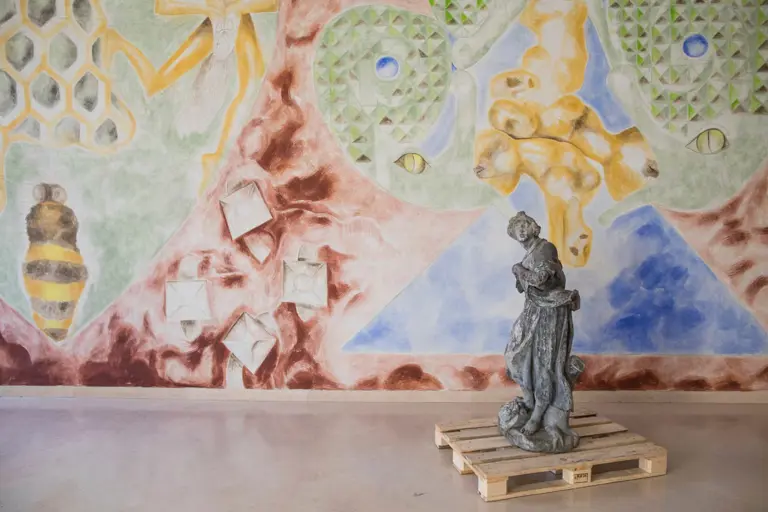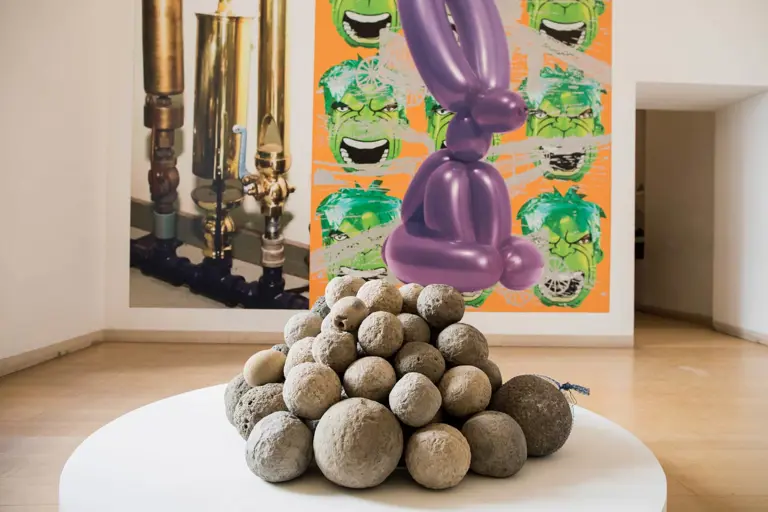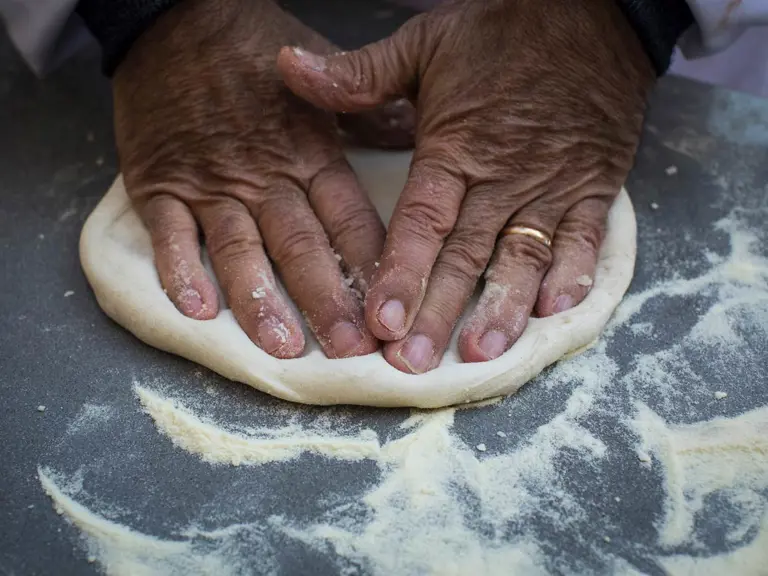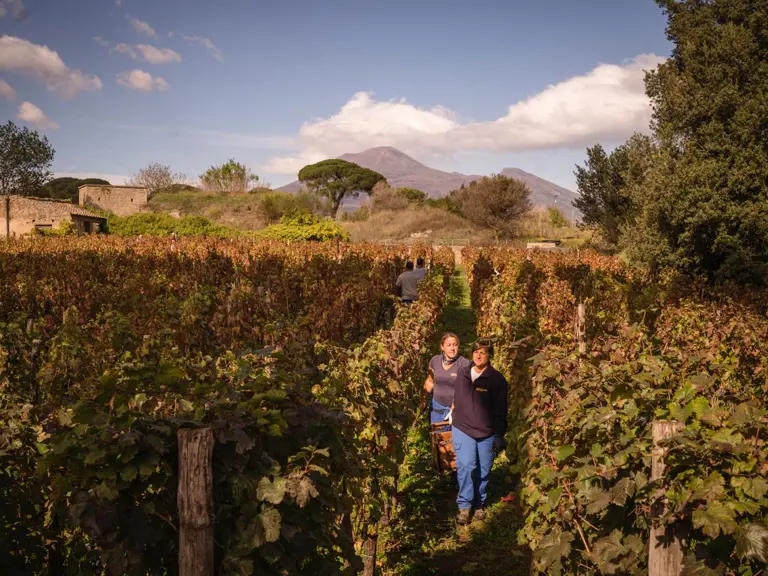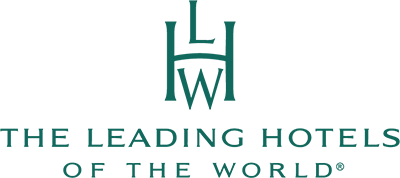EXCAVATING MODERNITY: POMPEI@MADRE
29.11.2017 NAPLES & AROUND
When the ruins of the ancient city were first brought to light in the mid 18th century, Enlightenment scholars across Europe pored over the first published images of frescoes, mosaics, statues and jewellery, and before long the Pompeiian craze began to influence Neoclassical art, architecture, interior design and fashion, and to feed into the iconography of political power - it’s no accident that Napoleon’s sister Caroline was an ardent promoter of excavations in the Vesuvian area during her seven-year reign as Queen of Naples.
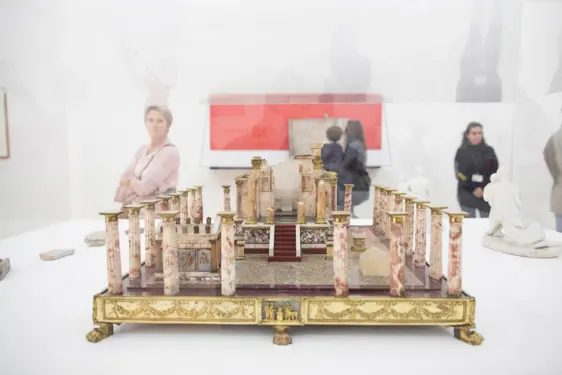
View
Neither is archaeology an unchanging discipline. It’s tempting to draw an uninterrupted progress vector from the supposed tomb-raiding tendencies of the first Bourbon digs (actually, they weren’t that bad) to the care and rigour of today. But the history of how things were recovered from Pompeii and Herculaneum, what finds were most highly valued, what was considered worth preserving and to what extent reconstruction of the ruins was considered legitimate, is as much about changing fashions as it is about the pursuit of scientific purity. As leading British scholar of the Greek and Roman world Mary Beard pointed out in a review of the 2013 British Museum Show ‘Life and Death: Pompeii and Herculaneum’, “the remains of Pompeii are usually the product of a collaboration between the modern world and the Roman”.
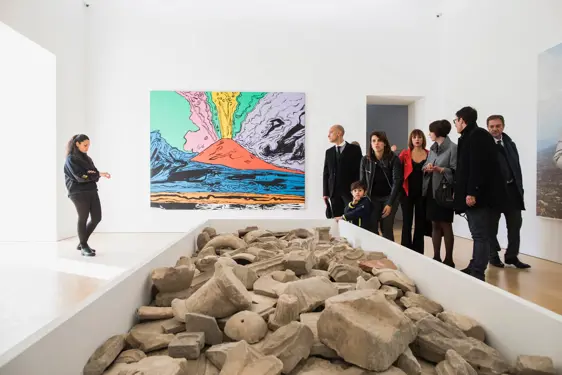
View
The exhibition is split into two parts. Pompei@Madre: Materia Archeologica - Le Collezioni (until 24 September 2018) extends from Daniel Buren’s atrium into the first-floor galleries that house the museum’s permanent collection, where installations and other work by artists including Francesco Clemente, Jeff Koons, Rebecca Horn and Anish Kapoor dialogue with art, artefacts and organic remains recovered from Pompeii, most of them rarely on public view. Upstairs, on the third floor, Pompei@Madre: Materia Archeologica (until 30 April 2018) presents a series of testimonies to the modern ‘afterlife’ of the Roman town – archaeologists’ journals, Neoclassical oil paintings and watercolours of ruins and eruptions, Capodimonte porcelain, architectural studies of the typical Pompeiian domus by Le Corbusier – juxtaposed with artworks by Nan Goldin, Pàdraig Timoney, Roberto Cuoghi, Goshka Macuga and others.
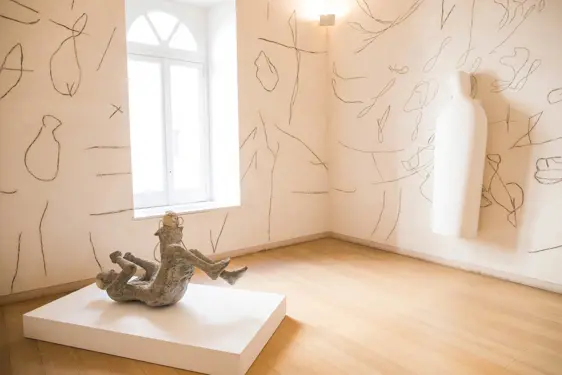
View
Multiple lines of fracture and fraternity are set up in a show that encourages diverse readings. A central display case in the upstairs room dedicated to picturesque and sublime views of Vesuvius in eruption contains fragments of vases and other archaeological remains that were damaged during the Allied aerial bombardment of Naples in 1943 – the second time these fragile artefacts had been battered by a deadly rain from the sky. Downstairs, the room occupied by Mimmo Paladino’s installation Untitled, 2005 has a guest: one of Pompeii’s famous human casts, made by injecting liquid plaster into the spaces where victims’ bodies were buried. This one is, it is thought, of a father and child, their expressive, contorted forms overlooked by Paladino’s archaic scrawled wall markings and his mute white statue, paring the human form back to its most basic elements of torso and head, which regards these simulacra of suffering with pity, perhaps, or stern judgement, or Olympian indifference.
Museo Madre
Via Settembrini 79
80139 Napoli
www.madrenapoli.it
Open 10am-7.30pm, closed Tuesday
Photos © Roberto Salomone
Le Sirenuse Newsletter
Stay up to date
Sign up to our newsletter for regular updates on Amalfi Coast stories, events, recipes and glorious sunsets
